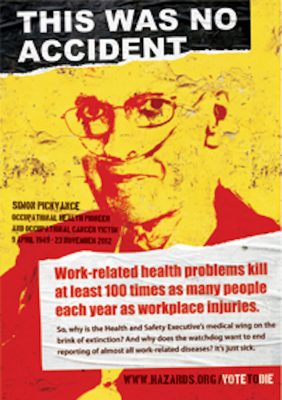 Chemical (and mineral) hazards come in the classic forms (gases, liquids and solids) that can be changed with heat, grinding, making into an aerosol, etc. Minerals such as asbestos fit in this category.
Chemical (and mineral) hazards come in the classic forms (gases, liquids and solids) that can be changed with heat, grinding, making into an aerosol, etc. Minerals such as asbestos fit in this category.
A word of warning to those who talk about “fumes”. These are not the same as vapours. Vapours are liquids that change their state when warmed up; paint gives off vapours. Fumes are small metal particulates, from things such as welding and diesel.
Why does it matter? Ventilation to deal with vapours has to be designed differently than what’s done for fumes. And respirator cartridges that protect you from vapours won’t do much for fumes, and vice versa.
More common in the jobs that men do traditionally, chemicals can cause everything from rashes and burns to death and reproductive health problems. (More to come about this.)
For more about chemical hazards, see information about data sheets, chemicals’ effects, cleaning products and solutions via green chemistry and prevention principles such as informed substitution.
For more about asbestos hazards, banning the “magic mineral” and other efforts to deal with the deadly dust, check out:
- Ban Asbestos Canada

- the work of the Canadian Environmental Law Association to ban asbestos
- the Canadian Mesothelioma Foundation, which helps those with the deadly disease, their families and friends, including links to medical interventions
- the US-based Asbestos Disease Awareness Organization (ADAO), which has lots of information, newsletters and international connections
- the International Ban Asbestos Secretariat (IBAS), based in the UK
- the many resources about asbestos at Hazards.org, including the story of Simon Pickvance, an occupational health advocate and researcher who died of mesothelioma in 2012
